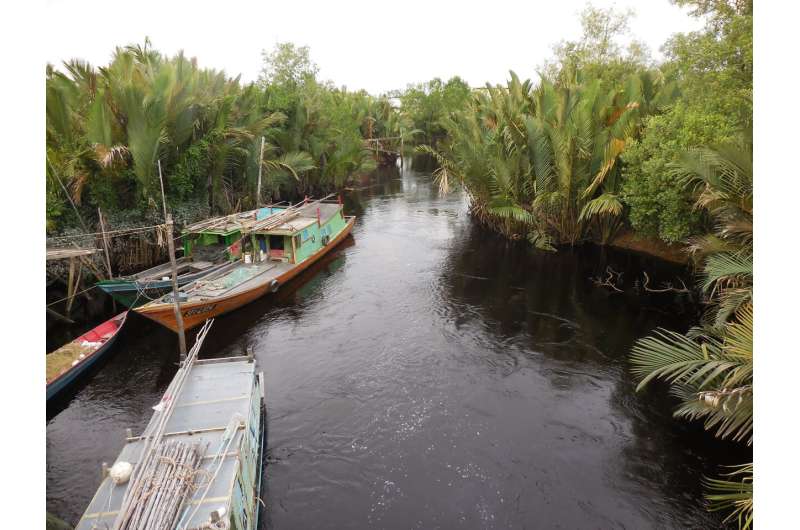Geoengineering could destabilize tropical peat soils

The Earth is warming up at an increasing rate. A contributing factor is carbon dioxide (CO2), a greenhouse gas, prompting researchers to investigate methods to reduce levels. In her dissertation at the University of Bremen, Dr. Alexandra Klemme discovered that the "enhanced weathering" strategy—which, until now, has been considered a promising method—is not suitable for removing CO2 from tropical peat soils. The research findings have now appeared in Communications Earth & Environment.
"Various strategies for extracting carbon dioxide (CO2) from the atmosphere are being discussed around the world. One of these methods is enhanced weathering," explains Dr. Alexandra Klemme. She studied the effects of enhanced weathering on tropical peat soils as part of her Ph.D. thesis, concluding that this approach is not suitable for reducing CO2 in these areas.
Dr. Klemme conducted her research at the Institute of Environmental Physics at the University of Bremen (Dr. Thorsten Warneke, Professor Justus Notholt) in close cooperation with the Bremen-based Leibniz Center for Tropical Marine Research (Dr. Tim Rixen) and Swinburne University in Malaysia (Dr. Moritz Müller).
Why 'enhanced weathering,' and why tropical peat soils?
Weathering is a natural process in which a chemical reaction binds CO2 with rock and water, thereby removing it from the atmosphere. "This happens extremely slowly, and a reduction in atmospheric CO2 is only noticeable when we look at the trend over thousands of years," says Dr. Klemme. The enhanced weathering method involves crushing rocks into powder. "This increases the surface area where the chemical reaction takes place, which accelerates the weathering process. Spreading pulverized rock over land—for example agricultural land—is being discussed as a possible method for reducing atmospheric CO2."
Warm and humid conditions further accelerate the weathering process, making tropical peatlands one of the possible target areas for enhanced weathering. About half of these peatlands are located in Southeast Asia. They store huge amounts of carbon and, in their natural state, absorb CO2 from the atmosphere. Today, a large proportion of these peatlands have been converted into agricultural land.
"In most cases, this is associated with drainage and leads to peatland transforming from CO2 sinks into CO2 sources," explains Dr. Klemme. It is hoped that using enhanced weathering in these regions will counteract these CO2 sources. "In addition, enhanced weathering would increase the pH value in the acidic soils. The agricultural industry would welcome this because it increases plant growth."
Increased pH value destabilizes peat soils
However, this approach will not have the desired effect, because increasing the pH value through enhanced weathering would destabilize the peat soils. Beyond increasing CO2 emissions from peat soils, Dr. Klemme discovered that this technique resulted in more carbon leaching into rivers, thus raising CO2 emissions from rivers and coastal areas.
The research was based on measurements from peat-draining river flows in Indonesia and Malaysia. The Institute of Environmental Physics, the Leibniz Center for Tropical Marine Research, and Swinburne University have been taking the measurements over the past 10 years. The study shows that an increased pH value could lead to total CO2 emissions exceeding the expected CO2 uptake through enhanced weathering. "Therefore, this method can be ruled out," says Dr. Klemme.
More information: Alexandra Klemme et al, Destabilization of carbon in tropical peatlands by enhanced weathering, Communications Earth & Environment (2022). DOI: 10.1038/s43247-022-00544-0
Journal information: Communications Earth & Environment
Provided by Universität Bremen



















